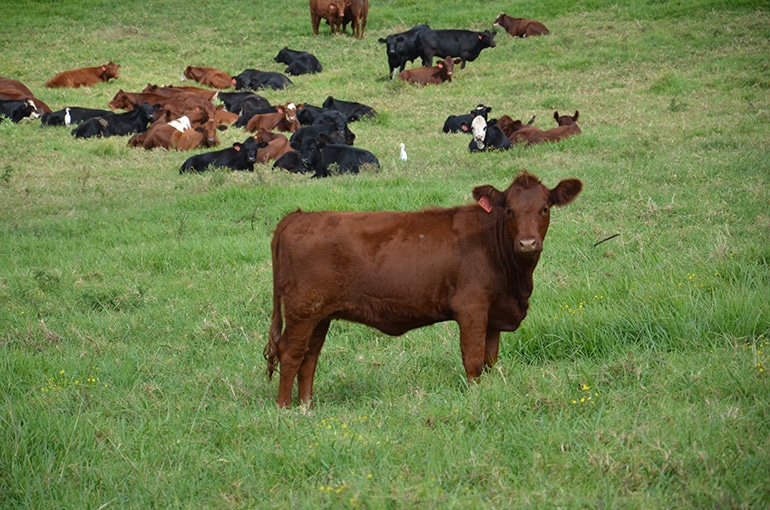More producers rely more on stockers for annual income.
November 1, 2020

Sponsored Content
Stocker production is taking on more emphasis and economic importance in operations over time, according to the latest BEEF National Stocker Survey (NSS), sponsored by Zoetis.
Keep in mind the term, stocker, is used to also denote backgrounding.
Compared to the previous NSS conducted in 2007, stocker production represents a larger portion of annual gross income. Overall, 46% of respondents derive 51% or more of their annual gross income from stockers, compared to 41% in 2007. More specifically, in 2020, 19% of respondents say stockers account for 76-100% of their annual gross income; 27% of respondents say it accounts for 51-75% of annual gross income.
As logic suggests, stocker contribution to annual gross income increases with operation size: 67% of operations with 1,000 head or more generate 51% or more of their annual gross income from stockers; 86% of operations with 2,500 head or more. Even so, stockers contribute 76-100% of annual gross income in just 47% of the operations with 2,500 head or more; 37% for operations with 1,000-2,499 head.
The percentage of gross annual income also increases with operator age, from 39% of those 44 and younger saying stockers account for 51% or more of their income to 50% of respondents aged 65 or older.
Most respondents run stocker cattle year round (57%), similar to the previous survey.
The percentage of those running stockers year round increases with operation size, from 44% for those with 1-199 head to 92% for operations with 2,500 head or more. Feedlot stockers (77%) and pure stockers (70%) are most likely to run year-round, versus 62% for whole cycle and 49% for cow-calf stocker.
For survey purposes, respondents were classified as:
Pure Stocker (PS)—those involved exclusively in stockering and backgrounding cattle.
Cow-calf Stocker (CCS)—those involved in both the cow-calf business as well as stockering and backgrounding cattle.
Feedlot Stocker (FS)—those involved in both stockering and feeding cattle.
Whole Cycle Stocker (WCS)—Operators involved in cow-calf, stocker and cattle feeding segments of the business.
On average, respondents are running more stockers over time, too.
Respondents marketed an estimated average of 753 head per year, between known marketings in 2015-2019, and expected marketings in 2020-21. Across those years, the estimated average increased from 728 head in 2015 to an estimated average of 790 head in 2021. Increased marketings also can be seen across both surveys. In 2007, respondents marketed an estimated average of 694 head per year, between known marketings in 2002-2006, and expected marketings in 2007-08.
For 2015-21, 35-36% marketed 200-499 head of stockers annually, compared to: 30-32% marketing 1-199 head each year; 17-18% marketing 500-999 head annually; 9-11% marketing 1,000-2,499 head each year; 1-3% marketing 2,500 head or more.
Increased retained ownership between surveys, as well as more focus on value-added management and marketing also point toward the growing economic importance of stocker production within enterprises.
As mentioned previously in Subtle shift in stocker operations, slightly more stocker operations retained ownership in some of their cattle through harvest: 54% in 2020, versus 49% in 2007. Of those who retain ownership, 28% of respondents say they retain ownership in 100% of their stocker cattle.
Finally, only 20% of respondents say they have an off-farm job, which was 6% fewer than in 2007.
As logic suggests, those with off-farm jobs decreases with age, from 36% for respondents 44 years old and younger to 14% for those 65-years and older.
Likewise, off-farm employment declines with the number of cattle, from 27% of respondents running 1-199 head to 10% for those running 2,500 head or more.
Fewer feedlot stockers (12%) and whole-cycle stockers (16%) say they have an off-farm job than other operation types: 19% for pure stockers and 22% for cow-calf stockers.
Editor's note: BEEF completed analysis of the latest National Stocker Survey this fall. The first was done in 2007. They are the only national surveys to provide in-depth detail of stocker production, management and marketing. Both were conducted in order to gain more precise understanding of this diverse and critical industry sector.
About the Author(s)
You May Also Like



